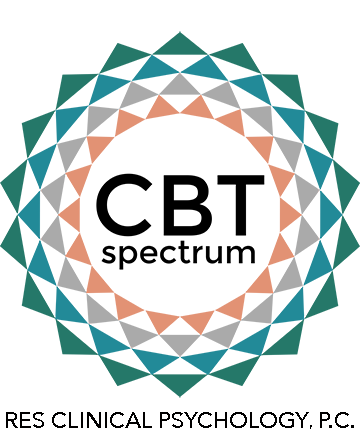FOR PARENTS: HELPING YOU & YOUR CHILD
As an expert in the diagnosis and treatment of Anxiety, OCD and related disorders, and co-occurring Autism, I will provide you with a clear and comprehensive plan in order to purposefully approach what your child is struggling with. My approach will be tailored to your child’s particular Autism, Anxiety or OCD experience. I will provide guidance and support for your entire family, as well as direction in how to work with other professionals and your child’s school.
I will help guide your child to overcome Anxiety and OCD related challenges and teach you how to most effectively support your child in the process.
By learning cognitive behavioral techniques, including exposure therapy, you and your child can prevent future struggles with anxiety and OCD and be empowered to live a meaningful and successful life.
Sometimes participation in school is disrupted by physical complaints, panic, school refusal, withdrawal or meltdowns. When needed, I will come to your home or do school visits to help your child face his or her fears. With older children and teens I will carefully accompany your child into avoided situations to help complete exposure practice.
PARENTAL INVOLVEMENT
Your understanding and involvement in your child’s therapy is an important part of the process. Parental participation can significantly improve the overall outcome and pace of progress. I will demystify what’s going on by teaching you about your child’s brain and behavior, melting away the confusion. Using a very hand-on approach, I will teach you new ways to respond to your child’s Anxiety or OCD and how to replace ineffective current habits with more effective ones.
Younger Children: I will work with both you and your child. In these cases a large component of treatment will include parent training to decrease your child’s avoidance of feared situations or OCD triggers in order to improve your child’s independent functioning.
Older Children: While parents may be included in session, I will work independently with your child so he or she can learn Anxiety and OCD management skills and to overcome avoidance of feared situations and OCD triggers.
CHILDREN WHO RESIST TREATMENT
Some children and teens do not want to come in to treatment. While I would ideally like to first meet with both you and your child, in these cases you may want to schedule sessions alone prior to bringing in your child.
RECOGNIZING ANXIETY
Anxiety disorders affect one in eight children. If your child is experiencing excessive fear, nervousness, or shyness beyond the temporary fears that are part of a normal part of childhood, he or she may be suffering from an anxiety disorder. Anxiety can often show up as physical symptoms; it is important to note if your child regularly suffers from headaches, stomach aches, or frequent visits to the school nurse.
Click here to read more information on Anxiety.
RECOGNIZING OCD
About one in 200 children have OCD and some experts think the real number is actually higher. While it is common for children to have routines (like at mealtime, bedtime or when saying goodbye), for children with OCD, these normal routines continue past an appropriate age, occur too often and begin to interfere with your child’s day-to-day life. Obsessions can be thought of as sticky thoughts that your child has difficulty moving on from and can come in many forms: worries about germs, getting sick, dying, bad things happening, or doing something wrong. Common to OCD are feelings that things have to be “just right.” Your child may even have a very disturbing thought or images of hurting others, or improper thoughts or images of sex that he or she doesn’t understand and is very ashamed about. Just as OCD thoughts show in different ways, there are many compulsions or rituals such as: washing and cleaning, repeating actions until they are just right, starting things over again, doing things evenly, erasing, rewriting, asking the same question over and over again, confessing or apologizing, saying lucky words or numbers, checking, touching, tapping, counting, praying, ordering, arranging and hoarding.
Click here to read more information on OCD and related disorders.
RECOGNIZING AUTISM
If you think your child has Autism-like traits and behaviors I encourage you to start the diagnostic process as soon as possible. While it's never too late to get a diagnosis, early intervention is important to access the best treatment and understanding. Click here to read more information on early diagnosis. While symptoms of Autism vary widely from person to person and every child develops at his or her own pace, there are some specific developmental milestones that all children should be reaching by specific ages and at least some of the following traits will be present if your child is on the Autism Spectrum:
- Older babies and toddlers may
- Fail to respond to their names, avoid eye contact, or have difficulty sharing an experience
- Engage in repetitive movements such as rocking or arm flapping
- Play with toys in unusual ways, like lining them up or focusing on parts of toys rather than the whole.
- Young children may
- Speak unclearly, can't retell a favorite story, doesn't respond to people outside the family
- Have difficulty following simple instructions, working simple toys, drawing pictures, doing daily activities
- Avoid eye-contact, doesn't participate in wide variety of games or want to play with other children
- Lose skills he or she already had
- Either show intense behavioral extremes or lacks a wide range of emotions
- Older children and teens may
- Have impaired social skills
- Avoid eye contact
- Rigidly adhere to daily activities
- Have unusual interests or demonstrate obsessive or repetitive behaviors
- Be highly sensitive or unresponsive to sounds, light, touch, tastes and smells
Click here to read more information on Autism.
